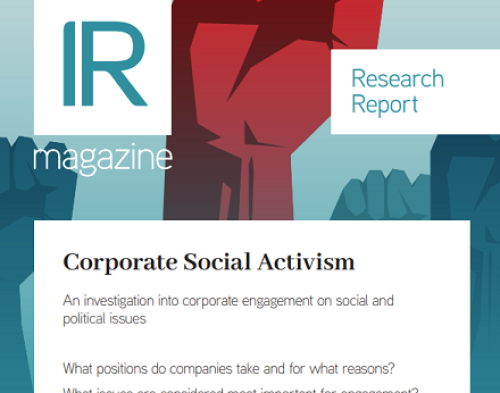Economic opportunities linked to the E in ESG are more easily identifiable to investors as having the potential to drive economic returns, according to Kiran Moorthy, head of European shareholder advisory at Citi.

Talking to IR Magazine about the growing pressure companies face to comment on social and political issues – the subject of our forthcoming fall issue cover story – Moorthy notes that although there is an increased focus on stakeholder value, investors remain ‘primarily focused on shareholder value’.
‘What has shifted recently across the ESG framework is that investors view the environmental component as a potential value play that can drive tangible economic returns,’ he says. ‘Whereas the G&S economic opportunity may not be immediately quantifiable.’
Another area of shift is generational. ‘Ultimately, [shareholder value] is primarily what most investors care about,’ says Moorthy. ‘That said, there is a generational shift [happening] in the institutional investor community. There are more 30-year-olds in portfolio manager seats now, and the way they grew up is very different from their predecessors – and what they care about does ultimately matter. If the economics are not in line with their values, there might be some level of disconnect.’
Still, Moorthy maintains that ‘individual investors are not looking for companies to set the boundaries of how to live life and be the force of societal change’.
Value drivers
While the E in ESG is increasingly being seen as a value driver, Moorthy says ‘the S element of ESG is at the forefront for those who [hold the view that] corporates should be measured across a stakeholder model.’
Using the Black Lives Matter (BLM) movement as an example of where social upheaval can drive corporate change, he notes: ‘With the BLM movement that came to the fore two years ago on the heels of George Floyd’s murder, companies were asked to look internally and assess their minority and black executives – to identify overall diversity metrics across their employee base, particularly within roles in science, technology, engineering and math.
‘These organizations needed to do more than just a check-the-box exercise and do more in responding to social outcries. They realized they had a responsibility to implement changes that would address minority under-representation. Rather than simply greenwashing, companies that responded well undertook a bottom-up approach.’
Moorthy notes that the pressure around social issues largely comes from employees but, when it comes to the E in ESG, it is investors asking for more and better information.
‘Two years ago, companies were told by activist investors to stop putting out 2050 climate targets and start monitoring annual ESG metrics and revise benchmarks as needed,’ he explains. ‘More importantly, investors wanted management compensation tied to annual ESG metrics – that’s the only way some feel fundamental changes can occur. We should see more specific targets around the broader ESG space.’
These E issues are much easier for companies and investors to quantify than those that fall under the S element. They are also easier to focus on longer term, making them more tangible. ‘Every two months there’s a new [social or political] agenda that’s front page,’ notes Moorthy. ‘Do investors and stakeholders really want companies and IR teams to add policy analyst to their job description?’










